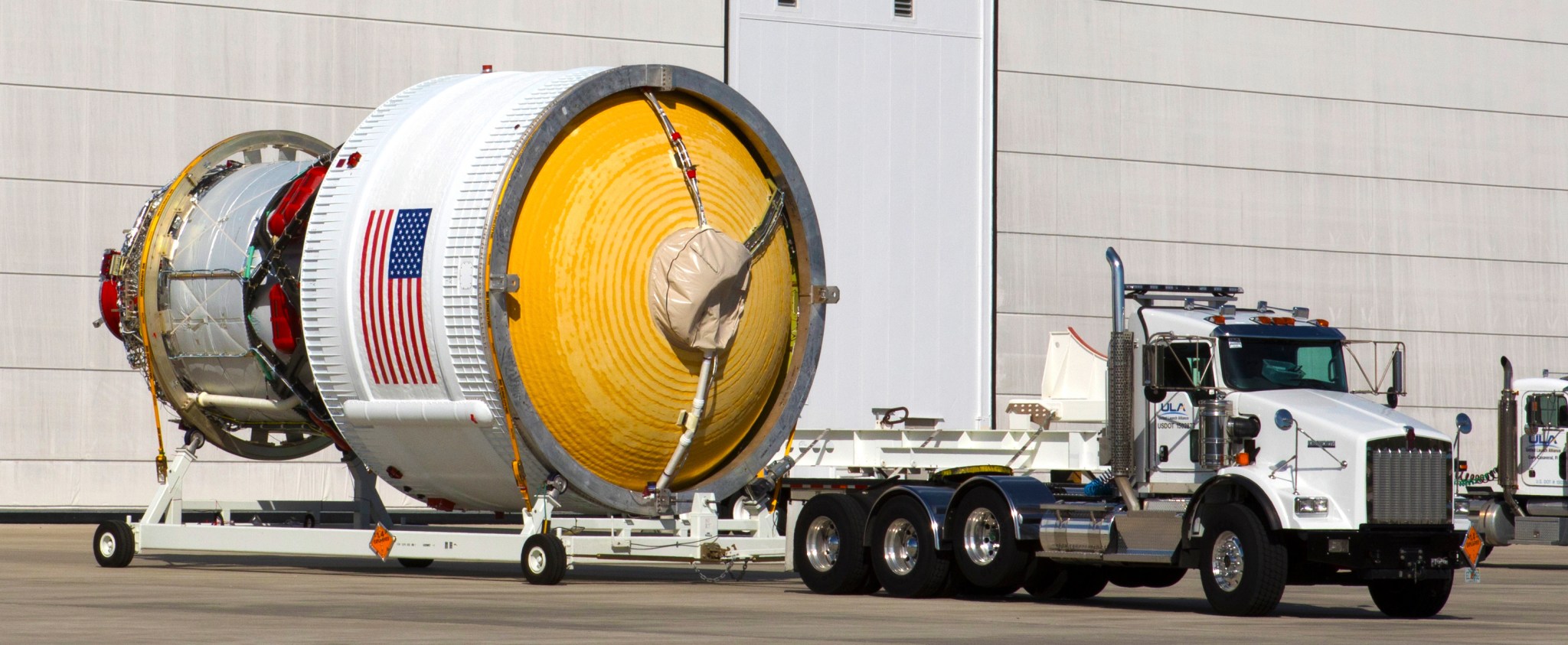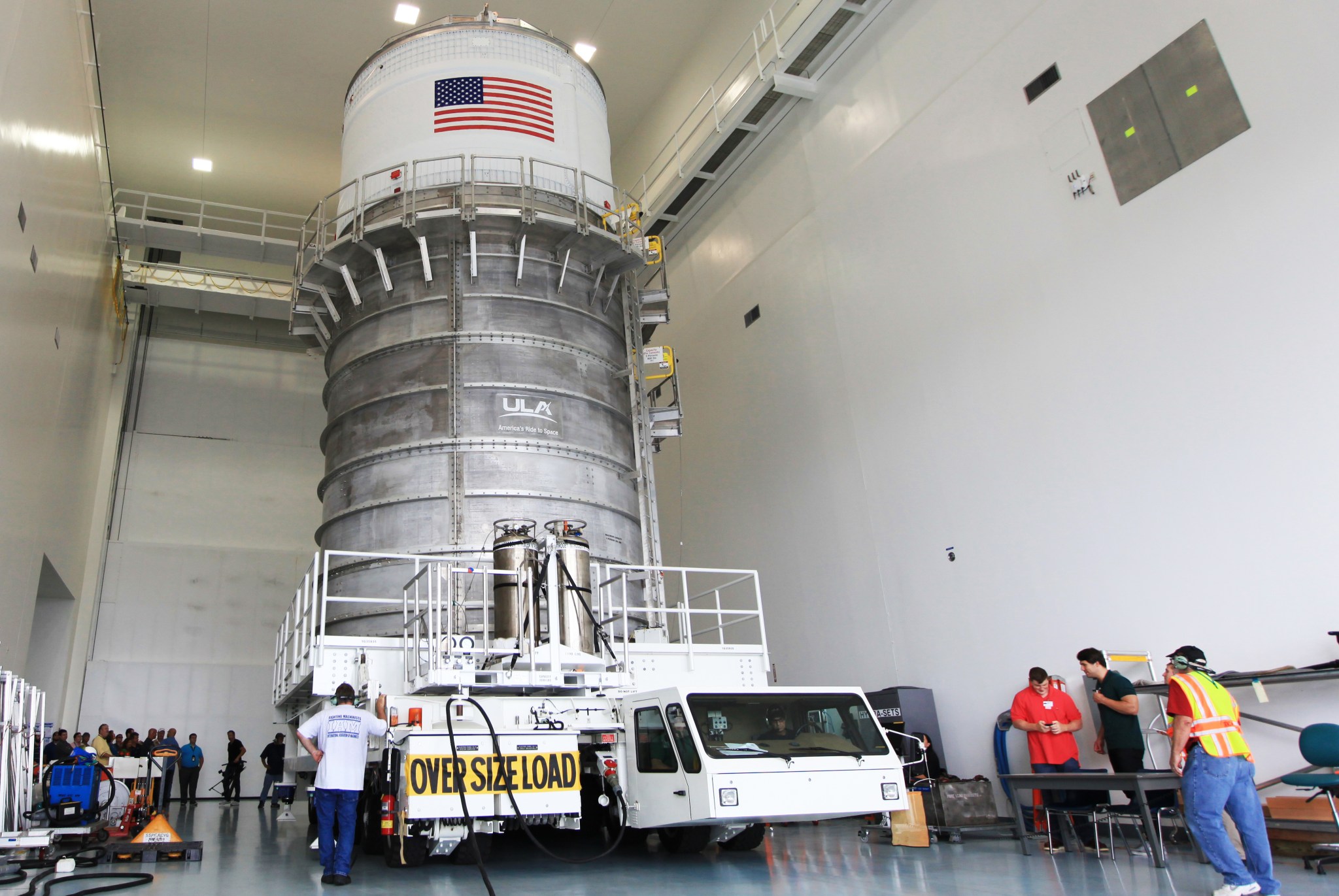By Bob Granath
NASA’s Kennedy Space Center, Florida
NASA recently marked another key milestone in preparation for human deep space exploration near the Moon. Officials with the Space Launch System (SLS) Spacecraft/Payload Integration and Evolution organization formally turned over processing of the rocket’s interim cryogenic propulsion stage (ICPS) to the center’s Ground Systems Development and Operations Program at NASA’s Kennedy Space Center in Florida.
The SLS is a new heavy-lift rocket designed to send astronauts aboard the Orion spacecraft beyond low-Earth orbit to the vicinity of the Moon, and ultimately the Red Planet.
During a recent ceremony in the high bay of the spaceport’s Space Station Processing Facility, Mike Bolger, manager, GSDO Program at Kennedy, noted the ICPS is the first piece of hardware being turned over to GSDO for processing in preparation for the first integrated flight of SLS and Orion, which is an uncrewed mission known as Exploration Mission-1.
“It’s great to be standing in front of flight hardware,” he said. “Over the next year, the components of the most powerful rocket in the world will be delivered to the Kennedy Space Center.”
John Honeycutt, SLS program manager at NASA’s Marshall Space Flight Center in Huntsville, Alabama, thanked the Kennedy team for years of effort preparing the Florida spaceport’s facilities for processing SLS and Orion.
“I’ve seen all your hard work that you’re doing relative to the accomplishments you’ve made in the Vehicle Assembly Building, on the mobile launcher and out at the launch pad,” Honeycutt said. “We’re looking forward to getting you some more pieces of hardware to start moving over to the VAB so you can put the rocket together.”
The ICPS arrived at Port Canaveral aboard the United Launch Alliance’s (ULA’s) Mariner barge earlier this year, and is the first integrated piece of flight hardware completed for NASA’s SLS rocket. It was shipped from the ULA facility in Decatur, Alabama.
After arrival, the ICPS was transported to the ULA Horizontal Integration Facility near Space Launch Complex 37 at Cape Canaveral Air Force Station. There it was removed from its shipping container for initial inspections. Next, the ICPS was moved to the Delta Operations Center for further checkouts. It then was packed inside a canister and transferred to the Space Station Processing Facility.
The ICPS now will be processed and prepared for Exploration Mission-1, the first integrated flight of SLS and Orion. NASA is managing to December 2019 with four-to-six months schedule risk for launch. With the Orion attached, the ICPS sits atop the SLS rocket and uses liquid hydrogen and liquid oxygen propellants. The interim stage will provide Orion with the additional thrust needed to travel tens of thousands of miles beyond the Moon.
“Our human spaceflight mission at NASA is to push humans deeper out into the solar system,” said Bill Hill, deputy associate administrator for Exploration Systems Development at NASA Headquarters in Washington. “We are going to take the Orion spacecraft, with the help of ICPS, farther into the solar system than any spacecraft built for humans has ever gone.”






























